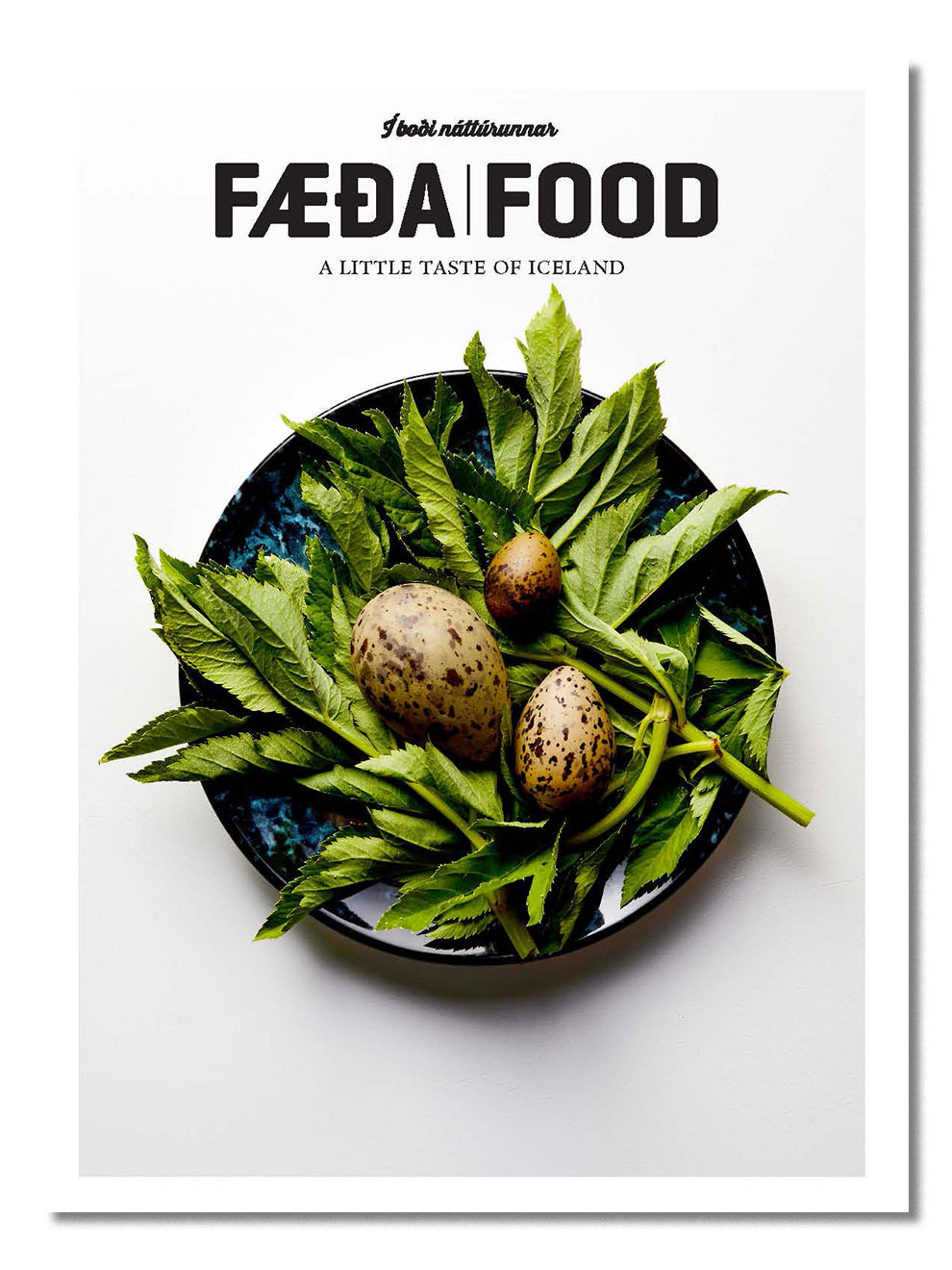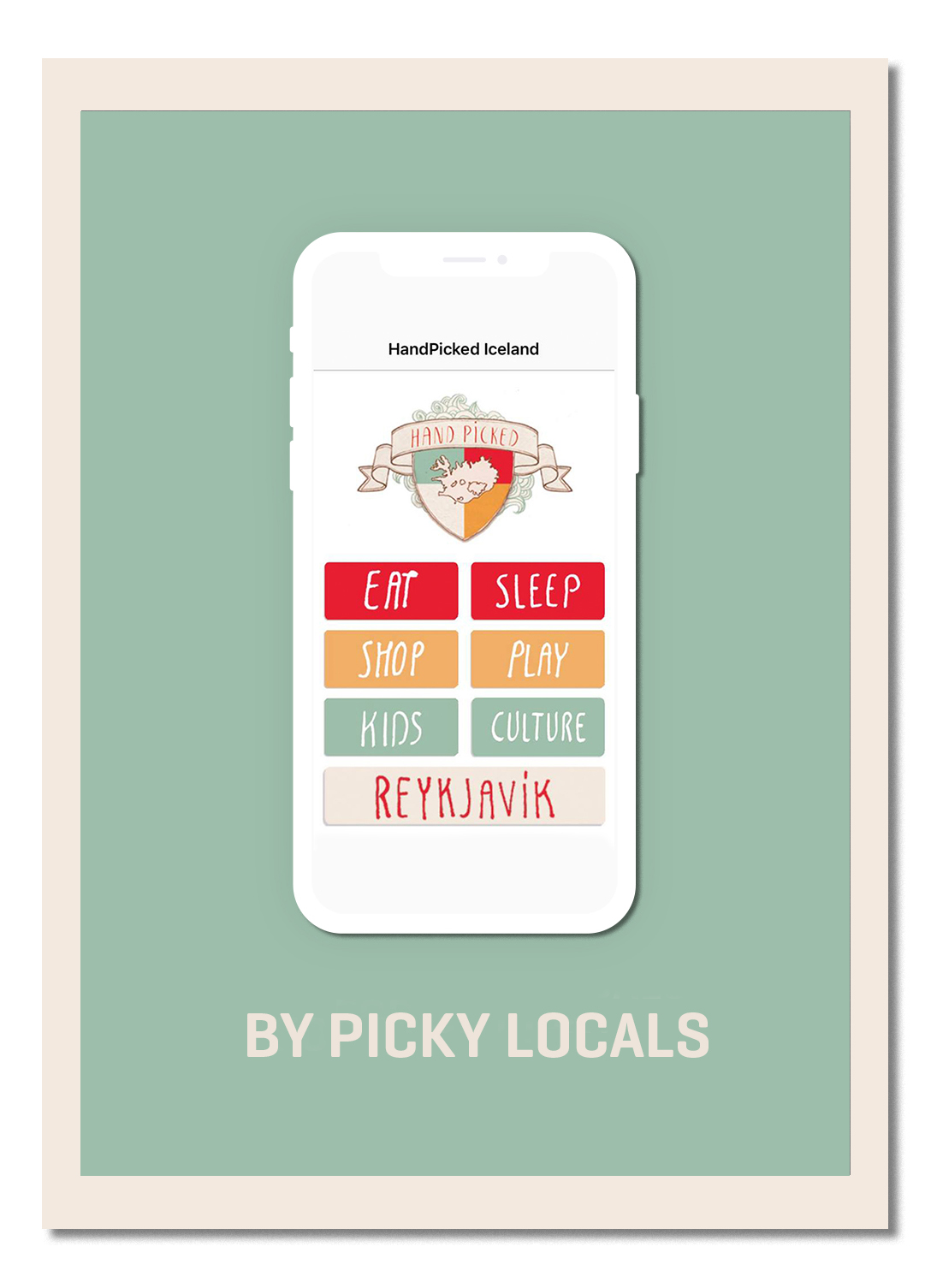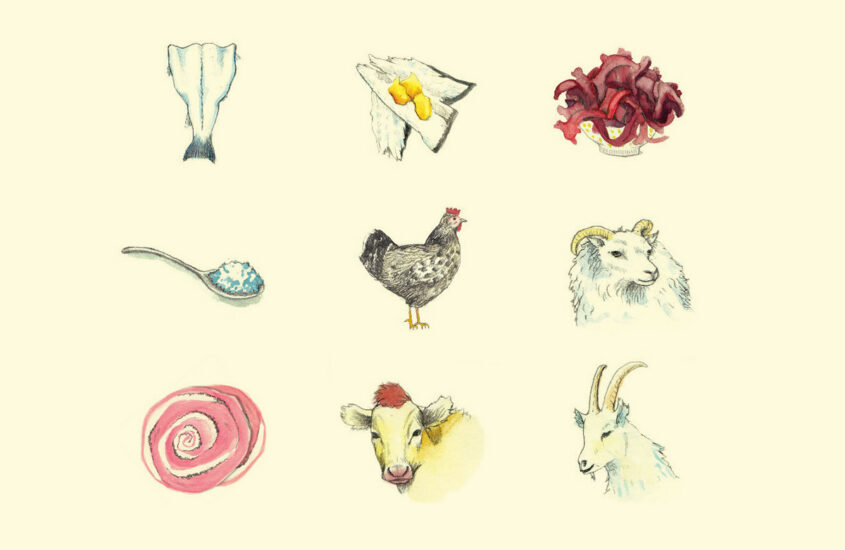
The Slow Food Ark of Taste
Text DOMINIQUE PLÉDEL JÓNSSON Illustration ELÍSABET BRYNHILDARDÓTTIR
The Slow Food Foundation for Biodiversity is a division with in The Slow Food organisation to counteract the threat of extinction and lack of diversity. The primary tool that the organisation has created is the Ark of Taste, which is a catalogue of the products or farm animal species that are facing extinction or belong to the food culture and heritage of a community and must not disappear. Here are some of the products that have been made part of the Icelandic Ark of Taste. These foods are unique in the world and have indisputable cultural value.
THE ICELANDIC ARK OF TASTE
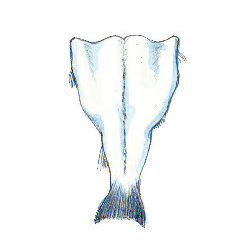 SALTFISH
SALTFISH
Sun–dried and salted so it lasts longer.
 DRIED FISH
DRIED FISH
Traditional dried fish is a popular snack, often catfish or haddock.
 DULSE
DULSE
Has been used since settlement times. Salt was made from burnt dulse.
 SALT
SALT
Flaky sea salt dried with
geothermal energy.
 SETTLEMENT CHICKEN
SETTLEMENT CHICKEN
The settlement chicken was saved from extinction at around 1960. SHEEP
SHEEP
A unique breed dating from the age of settlement.
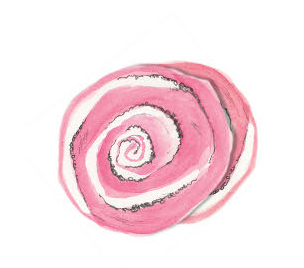 ROLLED LAMB FLANK
ROLLED LAMB FLANK
Important in making use of the entirety of the meat.
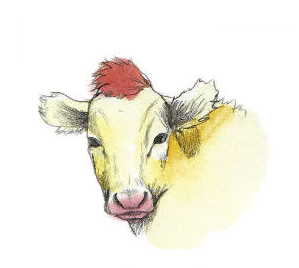 DAIRY CATTLE
DAIRY CATTLE
Have retained their unique characteristics since the age of settlement.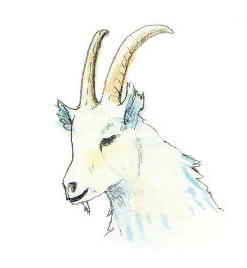 GOAT
GOAT
The Icelandic goat is the oldest breed of goat in Europe.
The foods in the Ark of Taste must conform to the ideology of Slow Food: to be traditional (have been used for at least 30 to 50 years), to be made by craftspeople or small manufacturers, to be good, unpolluted and fair—leading to ethical consumption (products and companies that have a positive effect on the environment and return something back to the community). These catalogued products currently number approximately 4,500 all over the world. The products have proven to be important in a wide context and chefs in the Slow Food Cooks’ Alliance take these products and put them on their menu to participate in maintaining them and introducing them to the public.
Many Icelandic products are included on the Ark of Taste and more are on the way, as we have various unique foods that are worth preserving and of value to our future. These include our farm animal breeds, which have remained relatively isolated since the age of settlement (the Icelandic goat, sheep and leadersheep, dairy cattle and the settlement chicken). Also important are seafood products that have been specially stored or processed (dried fish, sun-dried saltfish, the European plaice, flaky sea salt dried with geothermal energy, fermented shark), farm products (traditional Icelandic skyr, rúllupylsa (rolled lamb flank), magáll (smoked lamb flank), traditional smoked lamb, rutabaga) and what people foraged from nature (sea rocket, scurvy grass, angelica, Iceland moss, guillemot eggs). All of these foods have a uniqueness that is worth drawing attention to. Breadstuffs have not been mentioned here but they will also be on the Ark of Taste, because for a long time bread was not baked in Iceland as there was not much firewood to heat an oven, and therefore other types of breadstuffs were served instead, such as hot-spring bread and flatbread, which symbolise self-preservation (and sustainability) in Iceland. The purpose here is not to look back to the distant past for the sake of nostalgia; instead it is to make people aware of the value that consists in preserving these traditions and bringing them into the present—traditions that have developed over time and have been adapted to the difficult conditions in the country.
In Iceland, traditional Icelandic skyr and the Icelandic goat have been recognised as Slow Food Presidia. This recognition of the value of our cultural heritage also confirms that the Slow Food values concerning good food, unpolluted and fair for the producer as well as the consumer, are important to our future.

